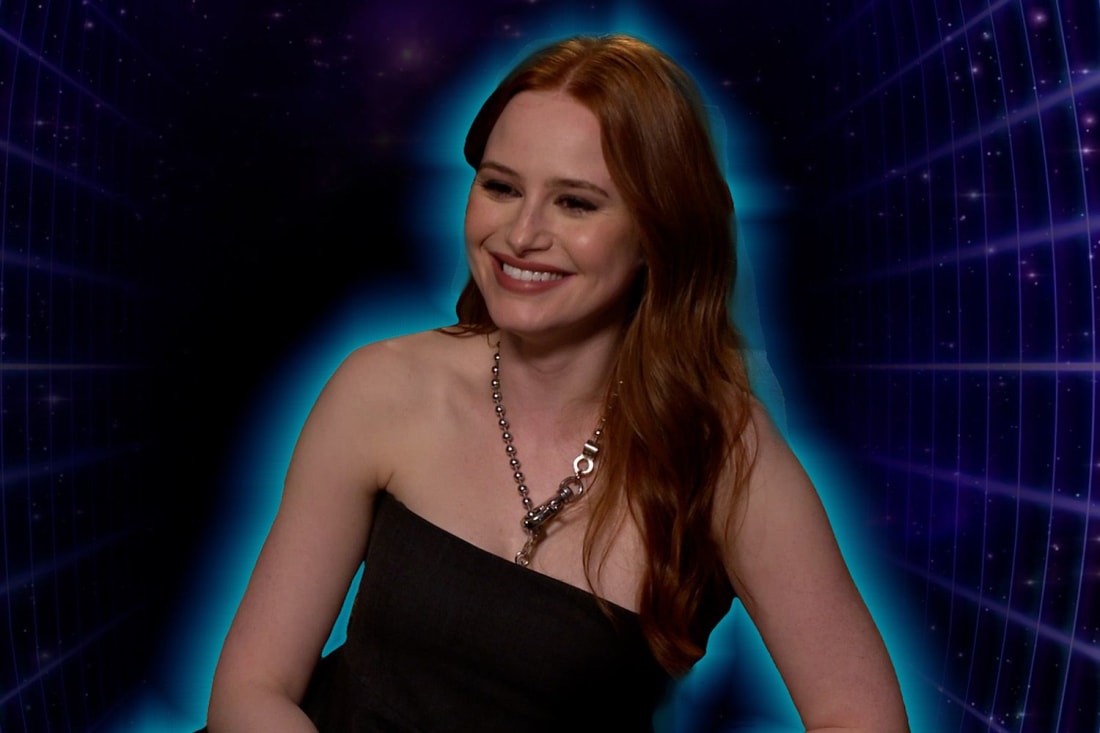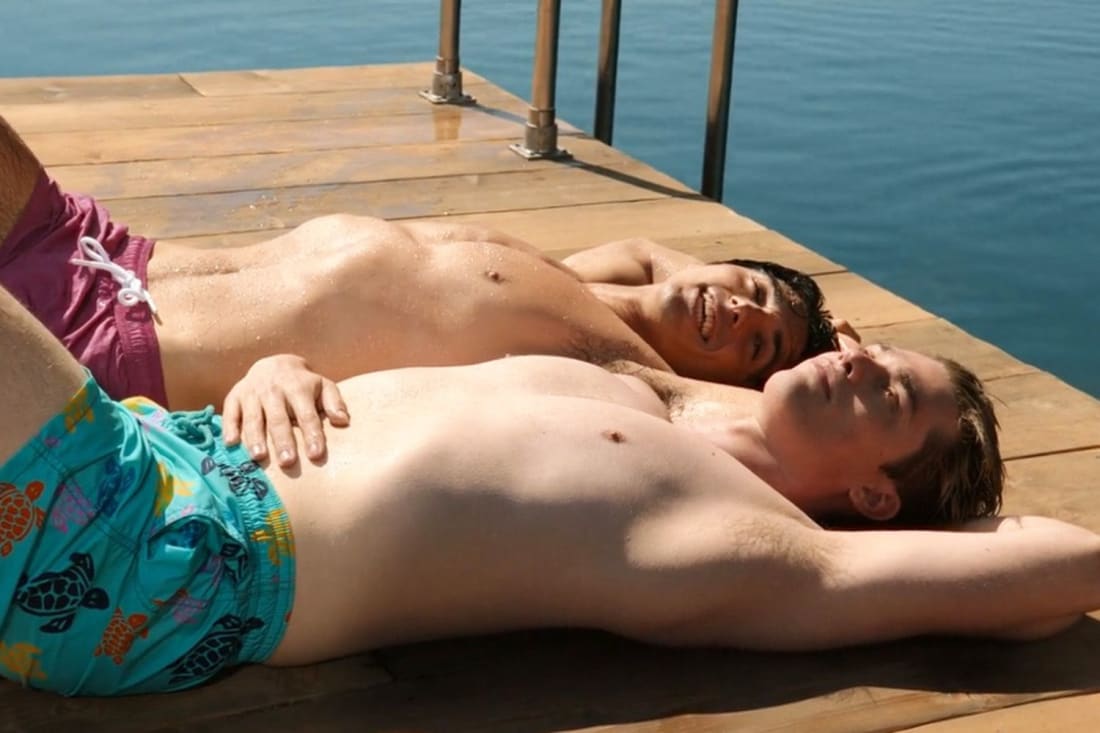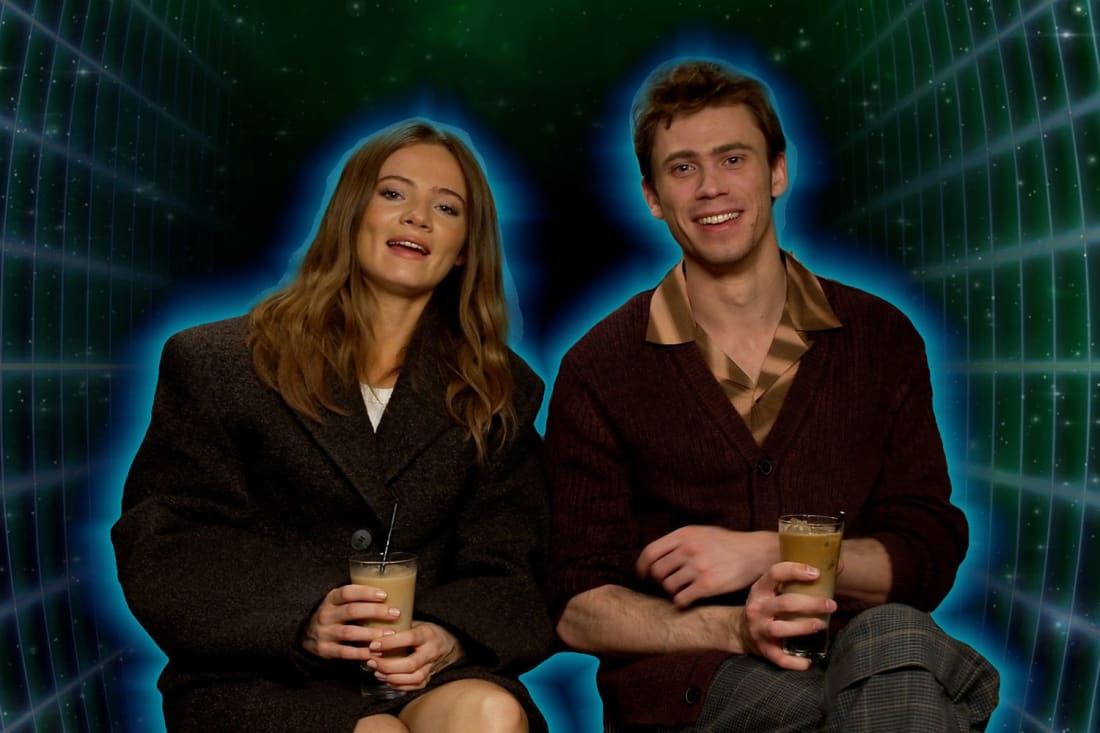Saura Lightfoot-Leon on playing the messy and feral lead in surreal film Hoard
The actress and writer-director Luna Carmoon talk improvisation and perfecting the Lewisham accent for the role
The actress and writer-director Luna Carmoon talk improvisation and perfecting the Lewisham accent for the role
“I remember the colour red,” says actress Saura Lightfoot-Leon about her introduction to the coming-of-age film Hoard. “I remember velvet and sofas, and I remember the ferret.” She’d been emailed a series of moodboards by writer-director Luna Carmoon with a brief description of the narrative and a pair of scenes, after confirming her involvement in the project. Quickly, the actress immersed herself in the character of Maria, the film’s teen protagonist. “The images were inspiring and thought-provoking, but feeling-wise, I understood them and was immediately in that world,” she adds. “I got a sense that Maria’s gonna go through a lot, and then this feeling of the supernatural pushed through too.”
The film opens in 1984 with seven-year-old Maria and her mother Cynthia (Lily-Beau Leach and Hayley Squires, respectively) collecting shiny objects from nearby bins. The latter’s all-consuming OCD takes over their home, a cave of similarly-acquired riches such as old cans and metallic wrappers, with busy furnishings that make the place appear to glow – plus a handful of rodents for whom young Maria has a fondness. The pair make up rhymes about TV meals (“dinners on trays, these are some of our favourite days”) and affectionately call each other “rhubarb” and “custard”.
When we meet Lightfoot-Leon, the ‘90s have arrived and Maria’s about done with school, now living with foster mum Michelle (Sex Education’s Samantha Spiro) and spending long summer days with her bestie Laraib (Deba Hekmat). This perceived new calm is upended when Michael, a former foster kid of Michelle’s played by Stranger Things’ Joseph Quinn, turns up almost in tandem with a box of ashes, and an overwhelming agony of grief and confused nostalgia subsequently infiltrates Maria’s life.
“Straight away I knew Saura was my Maria,” says Carmoon. “Her self-tape was lengthy and unusual; she brought her off the page. She’s very carnal in her acting – feral, in fact, and has an ability to be animal and surrender in safe places, to just trust in herself, and in me, and go for it.” The pair developed a close relationship, quickly matching each other’s energy, which lent itself to the project’s sometimes uncomfortable emotions and occasionally difficult scenes. To heighten this feeling of discomfort, Carmoon secretly sprayed Secretions Magnifiques by French perfumer Etat Libre d’Orange around the set, a perfume with notes of sweat, saliva, blood and sperm.
“I understood [the film] was about grief,” the actress says. “And I’d recently experienced grief myself, so immediately I had a personal hook in, which can be very powerful. Here, the grief element is delicate – Maria becomes intimate with it, an intimacy that isn’t logical. It touches into the surrealistic world and can feel supernatural.”
She’d watched Andrzej Żuławski’s 1981 horror Possession on Carmoon’s suggestion, closely studying Isabelle Adjani’s performance as the estranged wife Anna, but ultimately realised that for Hoard, it was all about Carmoon’s relationship with the world on screen. Hoard is largely informed by the director’s childhood, in which she grew up in Downham, south east London, watching cult films with her nan. “That weighed on me a lot at the beginning – I thought the film was completely autobiographical – turns out it is and it isn't,” says Lightfoot-Leon. “There's a lot of reality laced with imagination. Then I got to know Luna and shared a lot myself with her, and likewise her with me.” Perfecting the Lewisham accent became a real point of anxiety for the actress. Carmoon explains: “Saura grew up in The Hague so didn’t have a neutral British accent and learned the south east London dialect in the space of two weeks, just from being around me.”
“I was shitting my pants,” the actress, who was totally unfamiliar with the London borough until she met Carmoon, half-laughs. “As the process went on I lost the fear, but it was a big thing for me, the jargon of it. It informed a lot of how Maria was – my face felt different, everything about me started to feel different, and I leapt into that.” Her research, meanwhile, involved YouTube, watching video interviews with hoarders, as well as observing animals, while prep with Quinn began with a scene reading. “Joe’s amazing, and that chemistry test early on felt like an event in itself,” she notes. “It was about finding each other, and Joe is very generous. He's professional and sharp as an actor; I felt safe with him, always, whatever scene was coming.”
This sense of trust and keen familiarity proved important when collaborating on some of the more physical scenes. In particular, this meant allowing for episodes of spontaneity, such as at the dinner table, where the filmmaker allowed the cast to improvise. “Luna’s words are unique and fantastical, so I wanted to really be the mouthpiece for her,” offers Lightfoot-Leon. “But also, I love improv and finding things in the moment, and so I had a skeleton script, with certain scenes blocked out. With the shepherd’s pie scene [in which Michael instigates a food fight] there were two lines of ‘they sit and eat shepherd’s pie’, then there was a whole blocked out thing. It’s a crazy scene, done in one take. Luna very brilliantly set up an environment where whatever happened was just captured on camera.”
Pulled from the filmmaker’s deep knowledge of cinematic references, another vintage feature that inspired Hoard was 1979’s The Tin Drum by Volker Schlöndorff, which was frequently censored in the following decade for its depiction of underage sexuality. On screen it informs Maria’s own understanding of her physical self, first watching it with Cynthia before enacting elements with Michael, who’s ten years her senior.
“That film’s a white whale I’ve been chasing, from my introduction to weird movies my nan recorded late at night on VHS,” says the director. “For me, it’s about chasing the past and feeling this celluloid formed in me. It’s terribly disturbing, The Tin Drum, really about the underbelly of human nature, which I think twins it with Hoard. None of it I condone of course, but all of it is so deeply human, told in a childlike nature.” Adds Lightfoot-Leon, “It was a tough watch, but it’s also abstract in many ways. It touches on strange ideas that aren't logical, and it's Maria’s first visual of what sexuality is, without her knowing it was sexuality. She's naïve, going off impulses and memories.”
In many ways its own catalogue of love, Hoard is comprised almost wholly of scenes rich with intention, whereby as the viewer you feel submerged in Maria’s universe, privy to every visceral sensation. Lightfoot-Leon recounts one scene where Maria and Michael play at bullfighting, mirroring the actions on the TV set before them. “Something challenged me emotionally in that scene, it was very physically exhausting. It took me by surprise – we’d choreographed and rehearsed – but being in the space, I let go in a way that let other things come to the surface,” she says, reflecting on the internal significance it carried. “The shoot felt different from then onwards, I had entered a new realm. But I felt very protected by the people around me. Joe, particularly, was very kind. You know, you have to feel safe to go places – and not every scene requires that – but when it does happen, it's a nice thing to feel that you're in good hands.”
Hoard is out in cinemas now



